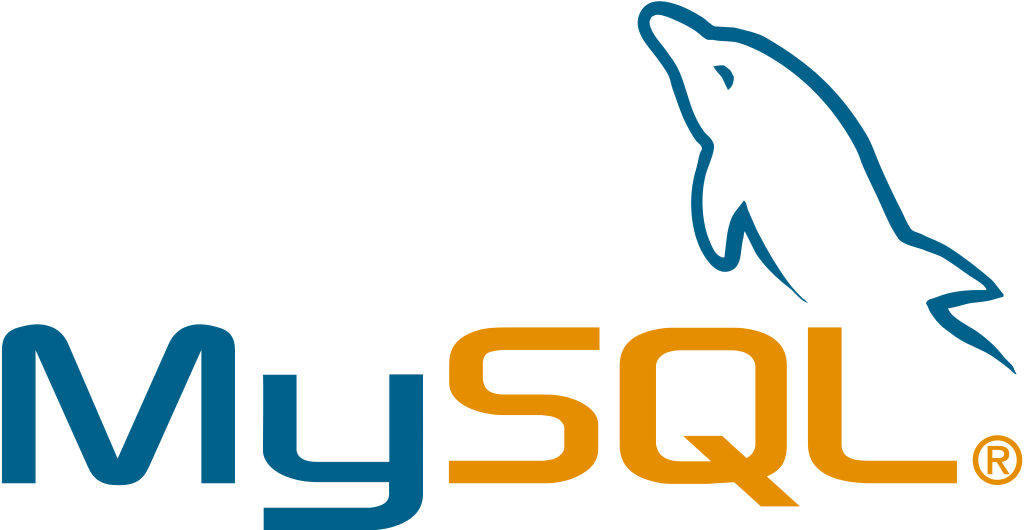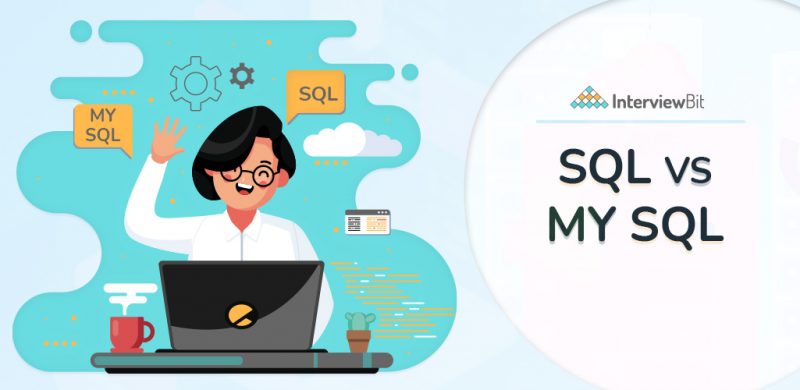Are you thinking about getting into a career which involves Business Analysis, Big Data, or Database Administration? Obviously, if that’s the case, then you’ll have to have a good understanding of what SQL and MySQL can do for you. It is inconceivable to expect that you can ignore these fundamental concepts when seeking a job in a position involving databases in the future.
Therefore, it is imperative that you have a firm grasp of not just SQL and MySQL but also the fundamental differences between the two as well. The purpose of this article is to provide you with a detailed breakdown of the differences between SQL and MySQL and how they can be applied to your daily business.
The boom of the Internet and online business has led every industry to explore the digital side of the market. The Pandemic also became a significant catalyst for businesses to go digital and make their presence on the web. All of this opened up new avenues for data analysts, business administrators, database administrators, etc, as data became a principal source for making strategic decisions.
Confused about your next job?
With this surging demand for creating pipelines for managing, analyzing, storing, and securing data, professionals require software and tools. This is how technology introduced us to databases, database systems, SQL, and MySQL.
Let us look at a few terminologies before diving right into the difference between MySQL and SQL.
What is a Database?
A database is a collection of all the data stored and organized electronically in a software system. It is a technology that allows us to store any type or large volume of data for easy accessibility and use.
There are so many types of databases catering to different purposes like centralized databases managing all the information for universities at a centralized location or a cloud database where the information is stored on a server that can be accessed online.
What is RDBMS?
In order to manage, retrieve, store and maintain the database, a system is required. That is called the Database Management System.
RDBMS(Relational Database Management System) is an advanced version of a database system that allows you to arrange, maintain, retrieve and manage databases in a tabular format. It is one of the most used tools by data analysts or database administrators for handling large amounts of data.
RDBMS is the first choice for many top-tier companies as it arranges data in tables that provide the following benefits:
- Limited Data Redundancy
- Data Security
- Easy Data recovery and backup
- Enhanced Data Usability
- Multiple Users can access data
Some of the examples of RDBMS are MYSQL, Oracle, etc.
What is SQL?
SQL or the Structured Query Language is a programming language that enables the function of retrieving, managing, and storing data in the relational database management system.
Just like to create an application on any system you require a programming language, likewise, it is required for managing the databases as well.
The condition of the SQL statements is declarative in nature and is known as SQL Query. There are different SQL clauses that can be used while writing the queries to define the purpose of action.
Some of the most basic and fundamental clauses and their function are:
- SELECT: extracts data from the database
- CREATE DATABASE: creates a new database
- DELETE: deletes the data from the dataset
- ALTER TABLE: modifies a table
- INSERT INTO: inserts new data into a database
- CREATE TABLE: creates a new table within a database
- UPDATE: updates data in a database
- FROM: retrieve data from specific columns of a table
- WHERE: filter records based on conditions
The format and structure of every SQL query are particular and case-sensitive. One must have to be flawless in writing the SQL statements. Suppose, for extracting all data from the table data_science, the SQL query structure will be as follow:
SELECT * FROM data_science;
Things to be considered
- The statement will be started by a command.
- The end of the query will be marked by a semicolon.
- The symbol ‘*’ defines all.
Besides the common clauses, there are many SQL keywords as well like AS (query to create an alias for a table or column name), BETWEEN (allow to select data or values from a given range), LIMIT (retrieve data from a set number of rows in the table) to perform specific functions.
SQL is a standardized, interactive programming language that is used by many organizations due to its portability, faster query processing, and efficiency in retrieving and managing databases.
What is MySQL?
MySQL, now owned and managed by Oracle Corporation, is a type of relational database management system. It is an open-source platform that allows one to store, retrieve and manage relational databases.

MySQL uses SQL queries to perform actions on the database. MySQL is one of the most popular RDBMS available that is faster, efficient, reliable, and easy to use.
Many top-tier companies like Yahoo, Google, Facebook, and many others have MySQL as their preferred database system for managing a large volume of data.
The benefits of using MySQL are:
- Open-source
- Data Security
- On-demand flexibility and Scalability
- Eminent Performance
- Comprehensive Workflow Control
- Complete Transactional Assistance
It is compatible with different modern-day programming languages including C++, C, Java, Python, etc for different platforms be it Windows, Linux, or macOS. Its versatility and cross-platform adaptability make it innovative and a high-end product for its clients.
Difference Between SQL and MySQL

There are times when people get confused between what is SQL and what is MySQL. So let us look at the primary difference between SQL and MySQL.
| Key Category | SQL | MySQL |
| Developers/Owners | SQL is developed by Microsoft Corporation. | MySQL was developed by MySQL AB but is currently acquired and owned by Oracle Corporation. |
| Function | SQL is a structured query language used for managing and retrieving data from the database system. | MySQL is a Relational database system that uses SQL to query data from the databases. |
| Syntax and Format | The syntax and format are fixed, declarative, and easy to use. Start with the clause and end with a semicolon. | MySQL is software and not a programming language, hence it does not have any commands or particular format. There are, however, the latest updates and versions of MySQL for enhanced performance. |
| Licensing/Availability | SQL is proprietary based software owned by Microsoft and not open to others for free. | MySQL is an open-source free platform that allows access to any and everyone. |
| Platform Support | SQL was built for WIndows, works partially for Linux, macOS with its latest versions. | MySQL is adaptable for cross-platforms, working well for Linux, macOS, and Windows. |
| Language Support | SQL is in itself a programming language used for database systems. | MySQL supports all the basic programming languages like C, C++, Perl, PHP, Python, Ruby, and many others. |
| Storage Engine | SQL supports only a single storage engine for different operations | MySQL supports different storage engines and does not take up a lot of space for different functions and operations. It also enables the plugin storage engine as well. |
| Data Security | SQL servers are secured as no third party or outsiders are allowed to manipulate data. | MySQL is susceptible to more security threats due to its open-source nature. It gives access to data manipulation and modification to unauthorized users as well during the run-time. |
| Server and Database | In SQL, the server and database work independently. This allows users or interested parties to work on databases even during recovery sessions. | MySQL servers do not work independently from databases and hence, blocks the time for the users to do anything else. This function allows a lesser chance for data manipulation or corruption during the shifting of data into different versions of the software. |
| Data Restoration | Time consumed for data restoration in SQL is less for a large amount of data. | In MySQL, the process of data restoration is quite time-consuming and requires a number of SQL statements for the same. |
| Query Execution | SQL allows truncating a query even during execution without disabling the whole process. | MySQL does not allow you to cancel a query in the middle of execution. The user can cancel the query execution at the cost of stopping the entire process. |
| Multilingual | SQL is available in different languages. | MySQL is available only in a single language that is English. |
| Connector Support | SQL does not come up or support any connectors. | MySQL is equipped with an in-built tool known as MySQL Workbench that enables you to create, design, and build databases easily and quickly. |
| Flexibility | SQL supports user-defined functions and XML. | MySQL does not support any user-defined function and XML. |
| Community Support | The only support for SQL problems and queries is Microsoft Support care due to its highly protective usage. | MySQL has great community support as it allows free access. |
| Advantages | Interactive LanguageCoding not requiredPortabilityHigh SpeedMultiple Data Views | Open-source data SecurityHigh PerformanceComplete workflow Control |
| Updates | An SQL database follows a standard format that does not require many or any updates to be performed regularly. | It is common for MySQL to be updated frequently, as it has a number of different variants. |
Conclusion
There is no denying the fact that there is a remarkable difference between SQL and MySQL. However, to conclude, an inclination towards any side is not possible. In summary, the main difference between SQL and MySQL is that SQL is a query programming language that manages relational database management systems, whereas MySQL is a relational database management system that utilizes SQL as a query language. The primary purpose of SQL is to query and operate databases, while My SQL allows you to manage, store, modify, and delete data as well as store it in an organized manner. Both of them are quite popular in their domain and, in-demand in professions that emphasize managing and administering data for strategic or insightful purposes.
SQL is a programming language whereas MySQL is open-source software. Both of them are quite popular in their domain and, in-demand in professions that emphasize managing and administering data for strategic or insightful purposes.
SQL and MySQL have different purposes and functions. All your choices come into play when you compare them with their competitors like choosing MySQL over other RDBMS because of its data security, high performance, and providing access free of cost.
SQL and MySQL might be different but have similarities to help achieve scalability, efficiency, and better performance for the interested parties. Ultimately, the decision to pick one over the other will depend on your specific requirements and the benefits each offer. Therefore, you should not learn about the differences between SQL and MySQL with the intention of choosing one over the other. You should instead learn the differences between both database management tools in order to gain a basic understanding of the syntax and usage.
Frequently Asked Questions
Q.1: Is MySQL the same as SQL Server?
Ans: No, MySQL and SQL Servers are both different Relational Database Management Systems that support different platforms and programming languages like C++, Python, PHP, etc.
Q.2: Should I learn SQL or MySQL?
Ans: To work on any database management system you are required to learn the standard query language or SQL. Therefore, it is better to first learn the language and then understand the fundamentals of the RDBMS.
Q.3: How difficult is it to learn SQL?
Ans: SQL is not really a complex language. It is a basic language with a fixed format and does not really have so many updates. Therefore, if you put your mind to it you could learn it easily.
Q.4: What programs use SQL and MySQL?
Ans: Many famous web-based applications and companies use MySQL like WordPress, Youtube, Joomla, etc. SQL is also used by many platforms like MYSQL, Oracle, Microsoft SQL Server, etc.
Q.5: Is MySQL free to use?
Ans: Yes, MySQL is a free-to-use, open-source relational database management system.







 Join WhatsApp Group
Join WhatsApp Group


